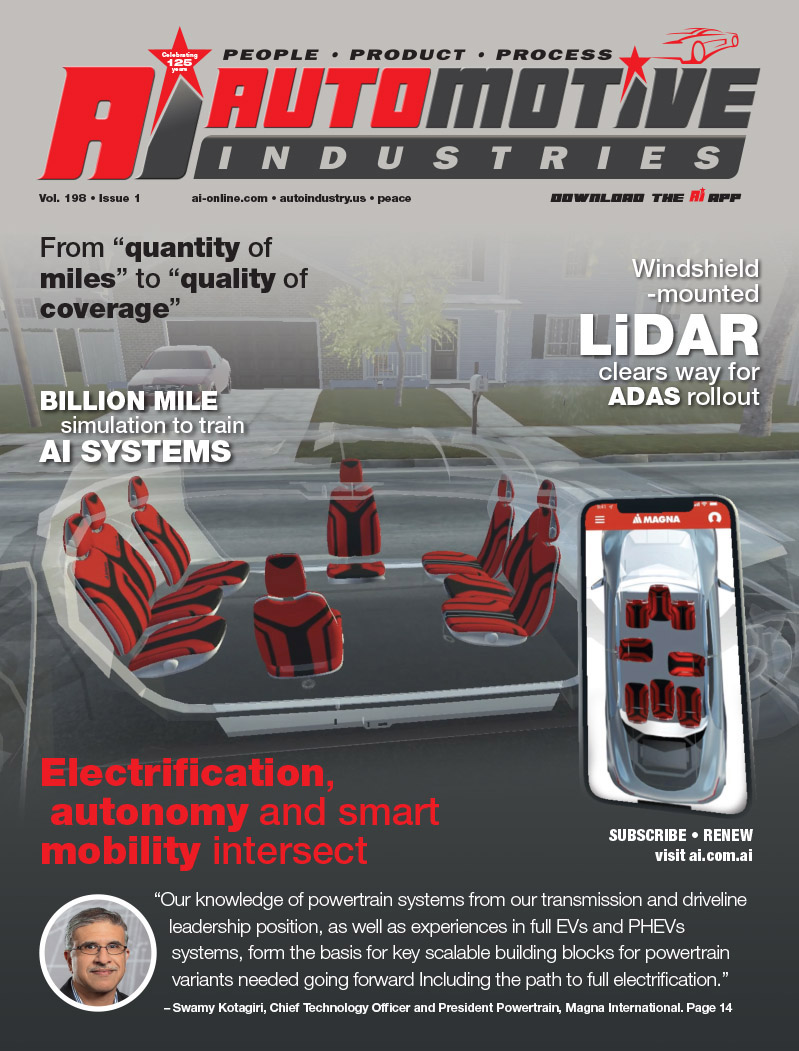
The man whose “name is on the building” has taken on the daunting task of steering the big blue ship into profitable waters.
 |
| Ford Motor Company chairman Bill Ford confessed to Fortune magazine that in those first six months his head was spinning and he almost wasn’t sure where to begin. “It was panic stations every day.” |
But the news was not all good. Third quarter global automotive losses, excluding special items, were $609 million, $61 million worse than in 2003 despite $32.8 billion sales of 1.5 million units, up from $30.2 billion on 1.42 million units. This means that Ford was losing more money while moving more product — the result of new-product launch costs, higher fixed costs, more and bigger rebates and (on foreign-built products) unfavorable exchange rates. So, with Ford Motor Credit and Hertz profits well up, the corporation was profitable primarily by financing and renting vehicles.
In North America, Ford lost $422 million vs. $134 million in 2003. Ford of Europe and PAG (Premier Automotive Group) combined, lost $204 million, a $220 million improvement over the previous year. PAG itself (Jaguar, Land Rover, Volvo and Aston Martin) lost $171 million on sales up $500 million to $6.1 billion. Ford Asia-Pacific/Africa and Mazda combined contributed a modest $48 million profit, up $40 million from a year ago, while South America made $59 million, an $85 million improvement.
Still, the overall improvement has been enormous over 2001, when Ford lost $5.45 billion on sales just under 7 million units vs. 2000’s $3.47 billion profit on 7.4 million vehicles. And the turnaround has come since a young (45) and relatively inexperienced William Clay Ford, Jr. (non-executive chairman since January 1, 1999) replaced Jacques Nasser as CEO on November 1, 2001. Two years later, the company posted 2003 net income of $495 million vs. a 2002 loss of $980 million. “We have dramatically improved our profitability, beaten Wall Street’s expectations for eight consecutive quarters and moved closer to achieving our mid-decade goals,” Ford said at that time.
The key to a solid team is good recruiting. Poised to take the reins at Ford (along with Mark Fields, PAG president) are  Laurence Booth, President of Ford, Europe,  Mark Schulz, President of Ford, Asia Pacific and Africa  and Greg Smith, President of Ford, the Americas. |
On the product front, following major success with its all-new 2004 F-150 pickups, Ford had just launched three critically important new U.S. vehicles on the same Volvo-based platform: Ford Five Hundred and Mercury Montego sedans and a Ford Freestyle crossover. Despite this FWD/AWD trio’s somewhat tepid performance and the Five Hundred’s dated styling, all four should fare fairly well, which will help reverse Ford’s steady U.S. market share decline — from more than 25 percent to roughly 18 percent — since 1995. Adding attention and excitement in what the company bills as its “Year of the Car” is a new-generation Mustang.
Part of Bill Ford’s strategy has been to accept declining share (to a point) by killing slow-selling models and reducing low-profit rental-fleet sales to make more profit on lower volumes. “I don’t want to be the biggest,” he told The Wall Street Journal in May. “I want to be the best.” But he contends that this share slippage should stabilize in 2005.
Ford’s plant and product consolidation moves have come as part of a five-year plan launched late in 2001, which also called for making plants flexible enough to build a variety of models. Another key element, said the WSJ, “is enhanced ‘revenue management,’ which means monitoring prices, tracking which products are moving quickly or slowly and adjusting tactics to achieve maximum revenue.” Ford also recently (and reluctantly) announced a restructuring of money-losing Jaguar, which included closing its historic Browns Lane, U.K. assembly plant, reducing its number of platforms and selling its Formula One racing team.
“I think Ford correctly realizes that it’s going to be an extremely competitive market,” says CSM Worldwide Global Forecast Services Vice President Michael Robinet, “and that they need to make sure they get the best bang for their development dollars. They certainly have turned the corner in realizing what’s needed in terms of product, and they’ll have to be sure to pick and choose the right programs to which to devote their resources.” We recently asked Bill Ford — the man whose name, it is often said, is on the building and upon whose mortal shoulders its survival squarely rests — about these and other issues:
AI: How did you feel after taking the top job when the realization sunk in that the company’s future was in your hands?
BF: When I became CEO, we were in a very difficult situation. I was excited and eager to get started … and very aware of what was at stake. We have an incredible heritage to uphold, and the lives of millions of people around the world are impacted by what we do, so there is a great sense of responsibility, and a number of us in key leadership positions, including me, were new to our jobs. (“In those first six months,” he told Fortune in June, “my head was spinning. I almost wasn’t sure where to begin. It was panic stations every day.”)
AI: What were the top three things that needed done ASAP?
BF: We were bleeding red ink, so our first priority was to reduce costs and create a business structure that made financial sense. Second was to sell our non-core businesses — most of them were losing money, and they were taking management time and effort away from our automotive and finance businesses. We also had to make major improvements in the fundamentals of our automotive operations. Our quality and productivity had to improve, and we had to refill our product development pipeline.
AI: What additional priorities were added as the process evolved?
BF: When we looked around after the first year, we felt that we were on the right track and our plan was working. But we weren’t moving fast enough. So we spent a lot of time and effort that year accelerating our restructuring and process changes and making sure everyone had a sense of urgency in what they were doing.
AI: What key Leadership moves have been made, and why?
BF: I wanted experienced, proven senior executives on my leadership team, and that included Nick Scheele, Carl Reichardt, Jim Padilla and Allan Gilmour. Since they were all roughly the same age, I knew that we’d need to have the next generation in place for a smooth transition when the time came, so earlier this year we moved people such as Greg Smith, Mark Fields, Mark Schulz and Lewis Booth into new leadership roles. They are all experienced leaders and work well together as a team. That group dynamic is very important to me.
AI: Which elements of the company have been restructured?
BF: We have divested ourselves of non-core businesses that didn’t make sense, and we are working to make sure our worldwide capacity matches our current and projected sales volumes, which has included closing some plants.
That has been difficult but necessary. We’ve worked hard to reduce costs in everything we do. The key is to reduce non-value-added costs, [because] you have to keep making investments in your future. We’re now set up to take better advantage of shared components, vehicle architectures and other resources across brands and borders, which is a big part of our strategy as we move forward.
 |
| Ford hopes that its “Year of the Car” will produce at least one car of the year. Following in the tracks of the successful Ford F-150 pickup, the company hopes that the newly designed Mustang (above) and Five Hundred sedan (below) will stem the company’s market share decline. |
 |
BF: There weren’t a lot of big-ticket items that stood out as being obvious cuts. We had to make some tough decisions early on, including closing some plants and laying people off.
But most of our reductions came from systematically reviewing everything we did and taking out small, incremental amounts of unnecessary costs. We reduced non-production and material costs and found ways to be more efficient in product development, including the shared components and platforms. TVM and 6-Sigma really helped to give us a disciplined, systematic approach that we could apply across the board to cut costs.
AI: Which processes have been rethought and retooled?
BF: I’d say practically everything. We realigned our product development process last year to improve its quality, efficiency and speed. We’re moving to flexible manufacturing systems as we retool our plants for new vehicles. We have a new process called Team Value Management that brings together cross-functional teams, including our suppliers, to improve value and quality. TVM helped us achieve record total material cost reductions last year. We also have adopted a quality improvement and waste elimination methodology called Consumer Driven 6-Sigma, which has saved us more than $2 billion worldwide over the last few years. And we attribute about half of our quality improvement to Consumer Driven 6-Sigma projects.
AI: Has TVM improved supplier relations?
BF: TVM is one of the key efforts underway to (help improve) relationships, and it’s an unqualified success. It focuses on fact-based, value-oriented cost management with open communications, and it has allowed us — together with our supplier base — to assess the gaps between actual and industry benchmark costs for components, modules and systems. We also have adopted a set of supplier relationship values to guide daily interfaces with our suppliers. We meet two to three times a year with our International Supplier Advisory Council, which provides an opportunity for Ford and supplier senior leaders to discuss emerging industry issues and establish coordinated responses. And we host Top 100 supplier CEO meetings to further promote an open dialogue and a candid exchange of views. With supplier support, we exceeded our 2003 milestones and material cost reduction targets while improving product launch, customer satisfaction and overall quality scores — and not at the expense of supplier margins. Supplier financial health, on average, has improved, and supplier earnings recovery is outpacing the general market.
AI: How did you address the thin-product situation?
BF: We started by making it clear to everyone that we were an automotive company, first and foremost. That sounds obvious, but we really needed to refocus our efforts on building great products. We made a firm commitment that we wouldn’t cut costs by taking future product out of our cycle plan. In fact, we added more products. This year alone we’re introducing 40 new products worldwide. By mid-decade, we will have launched more than 150, by far the most of any similar period in our history. We also needed to improve our product launches, which we’ve done. We’re bringing out these great new products on time, on budget and with high quality, and there’s a lot more on the way.
AI: How do you feel today about Ford’s present and future?
BF: In three years, we will have had an almost $10 billion turnaround. We have a competitive business structure in place and great products here and on the way. But I’m even more excited about our future. I think the people who have written us off are going to be surprised.










More Stories
What You Need to Know About Tire Pressure in Winter vs Summer
Essential Features to Look for in ADAS Calibration Systems
Your Guide to Filing a Car Accident Claim